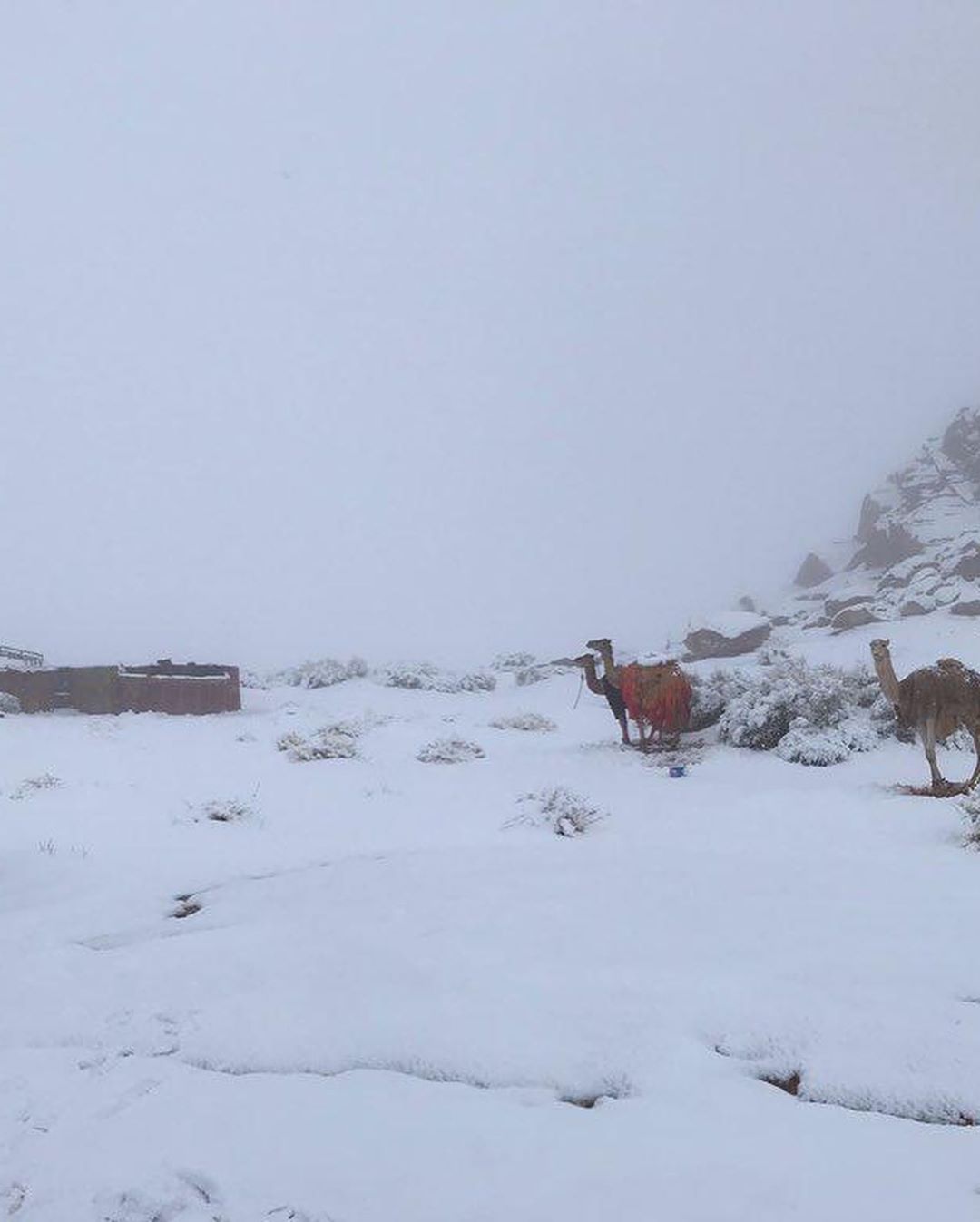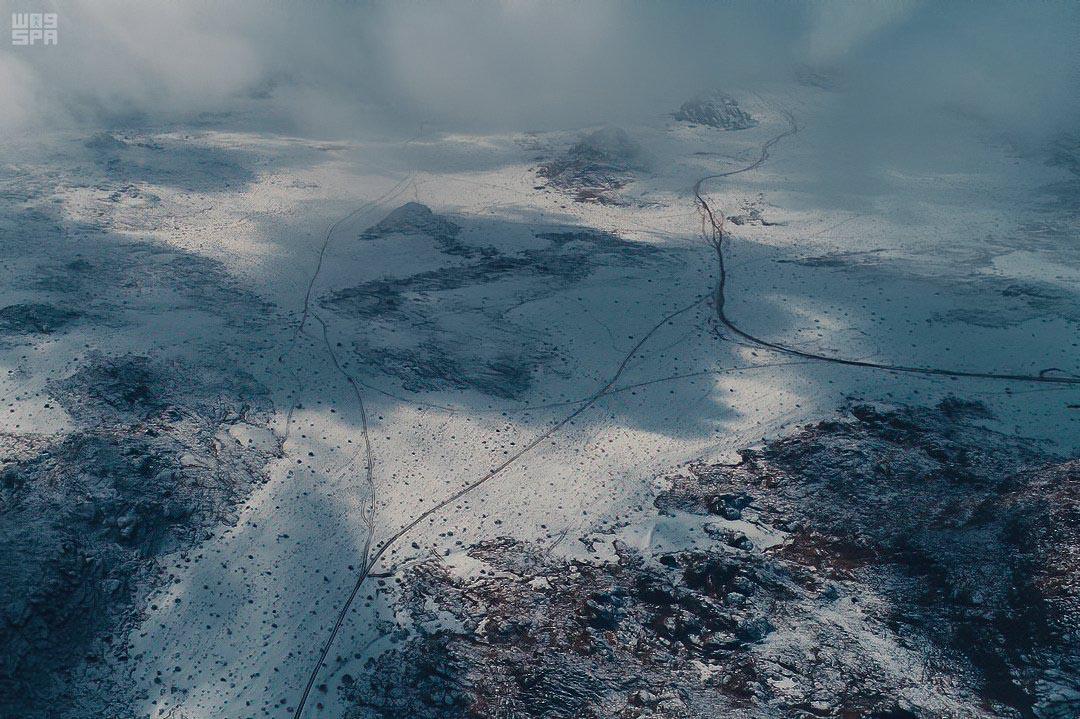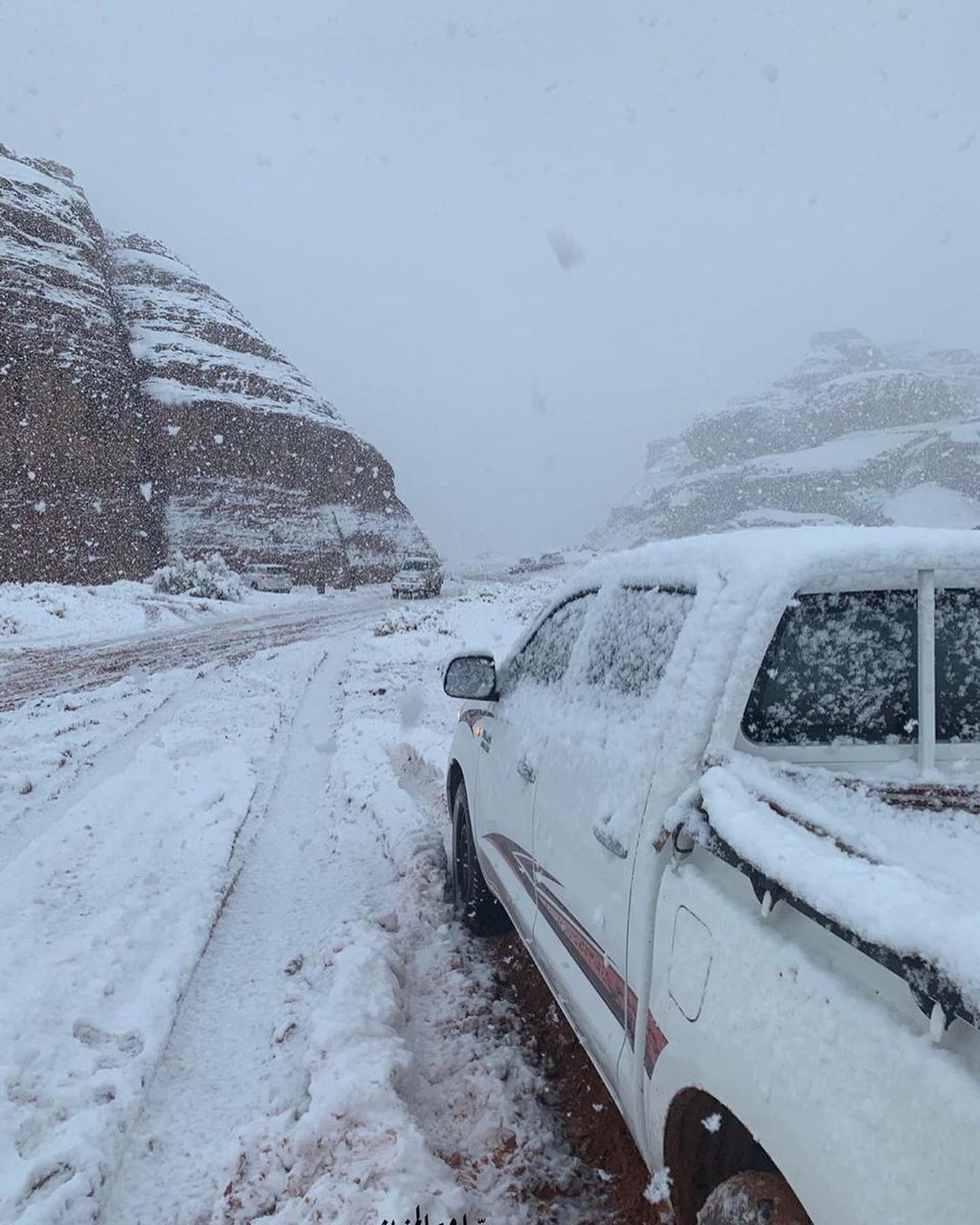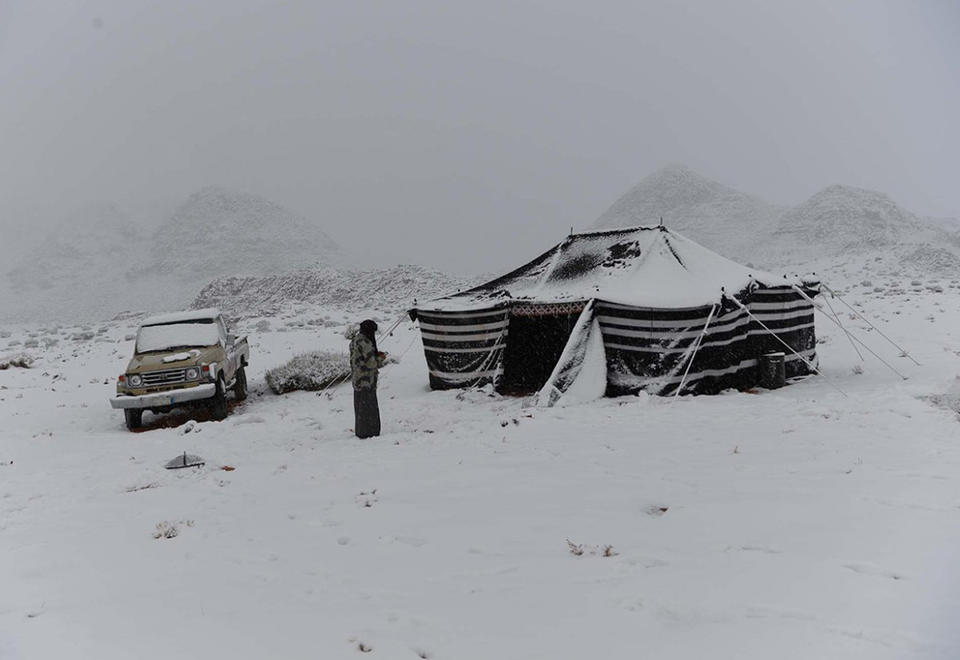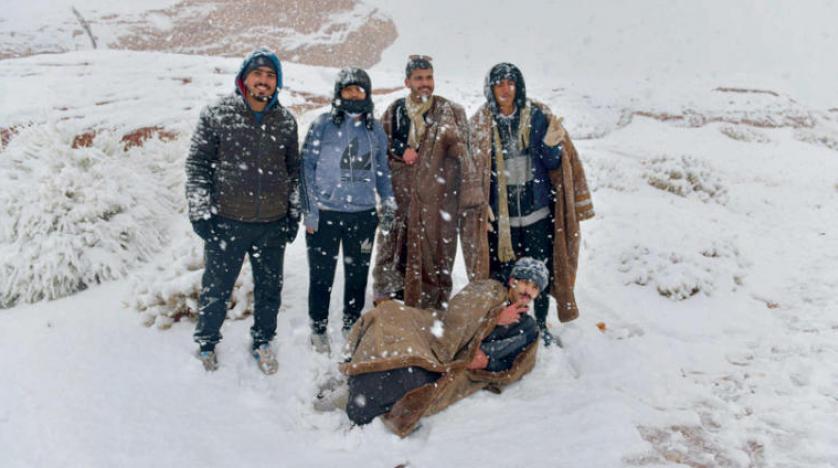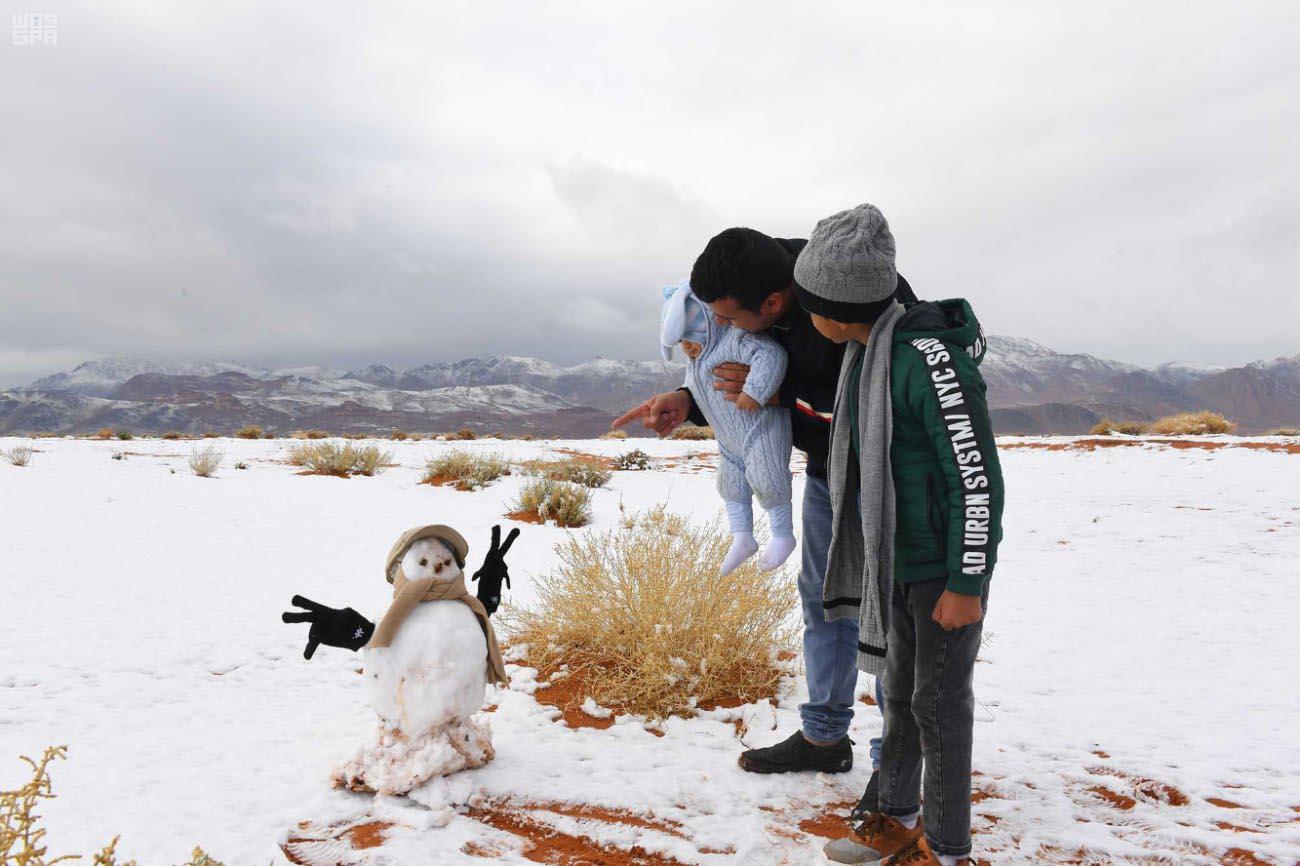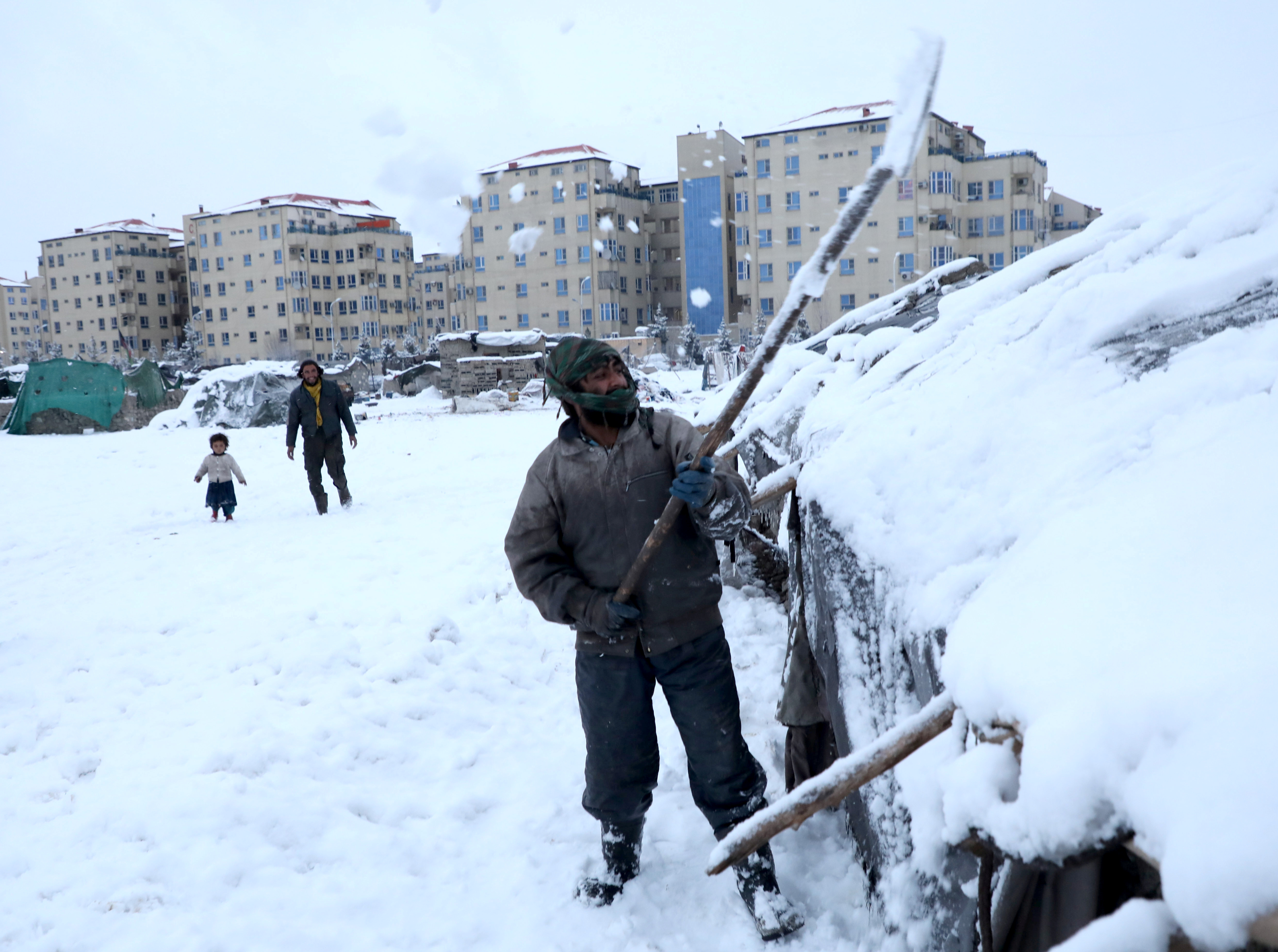[PHOTOS] Storm Covers Sweltering And Sandy Landscape Of The Saudi Arabian Desert With Snow
The snow was caused by a freak storm.
Last Friday, 10 January, the northwest region of Saudi Arabia, about 193km from the Red Sea, was covered in snow after a freak storm
A cross-border city called Neom and the capital city of the Tabuk Region in northwestern Saudi Arabia were covered in a white blanket during the weekend as a cold snap brought snowfall to the country's deserts.
Then on Wednesday, 15 January, a Twitter video posted by ABC News went viral. It showed camels grazing on snow-covered land in Tabuk.
The residents of the sandy landscape of the Saudi Arabian desert, meanwhile, took to social media to show off the rare occurrence
The intermittent snow also turned the place into a tourist destination with large numbers of citizens and visitors flocking the region
According to a pan-Arab daily newspaper, the Saudis enjoy the snowfall on the mountains of Jabal al-Lawz, Jabal al-Thahir, and Jabal Alkan in Tabuk for two or three weeks a year.
And since last Friday, they have been skiing, setting up tents, preparing warm beverages - such as tea, Arabic coffee - and enjoying the local food famous in the region, reported Asharq Al-Awsat.
"I expect the arrival of many visitors during this period, especially since the snowfall coincides with the school break this year," Wael al-Khaldi, Tabuk Tourism Authority's media official was quoted as saying.
While the region of Tabuk is one of the coldest in Saudi Arabia, it is usually dry, according to a senior meteorologist at AccuWeather
Typically, the region sees the temperature dip to 4 degrees Celsius (39 Fahrenheit) at this time of year.
"[It's] not crazy for them to get snow, it's just typically dry," AccuWeather's senior meteorologist Eric Leister.
"A powerful storm tracked from southern Europe and the Mediterranean into the Middle East last week, pulling cold air into the region and resulting in the snowfall," Leister said.
According to the AccuWeather's senior meteorologist, the same storm system then tracked farther east, causing deadly flooding and heavy snow with avalanches from Iran into Pakistan and Afghanistan.
ABC News reported that in Pakistan, at least 53 houses were completely destroyed by avalanches and in six provinces of Afghanistan, heavy snow has also led to the death of 39 people.
An Afghan man removes snow from his shelter in Kabul, Afghanistan 12 January 2020.
Image via AccuWeather via Omar Sobhani/Reuters